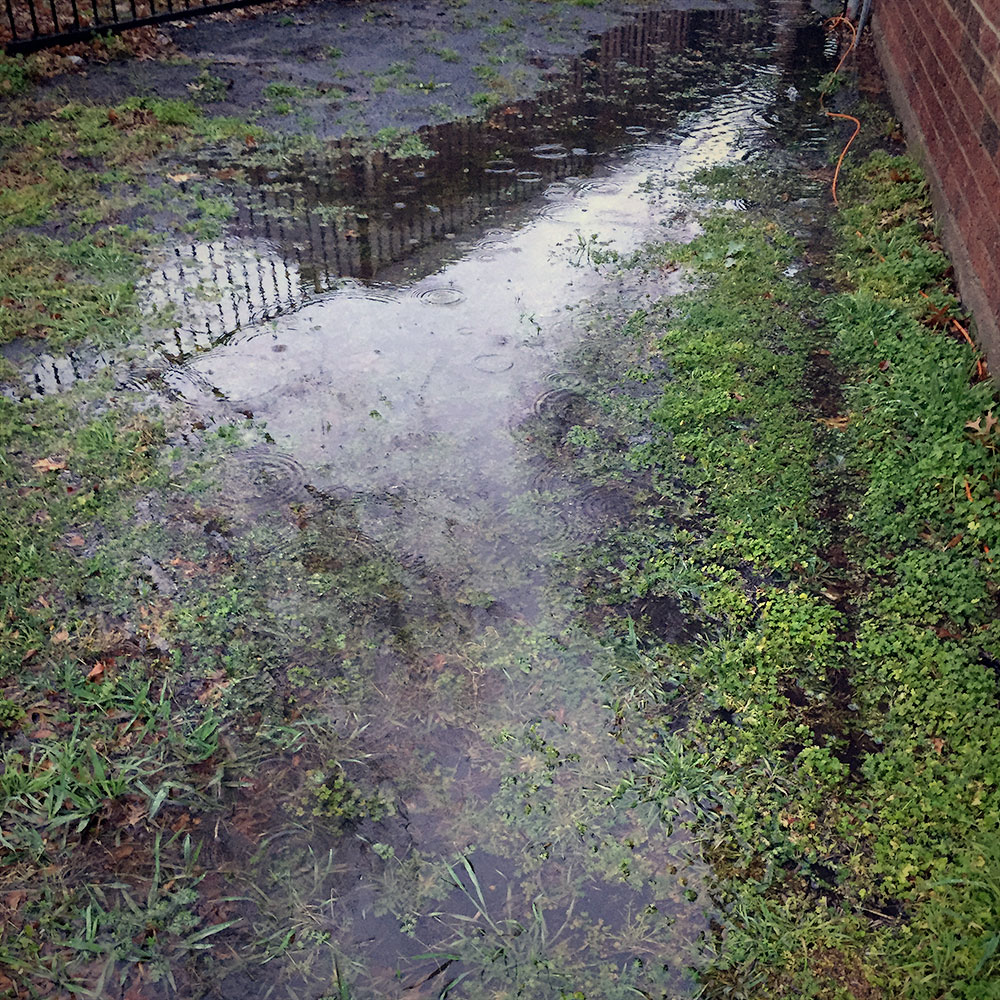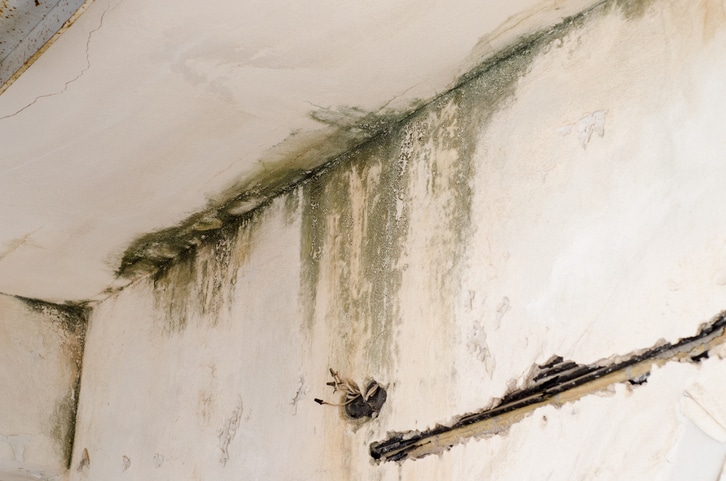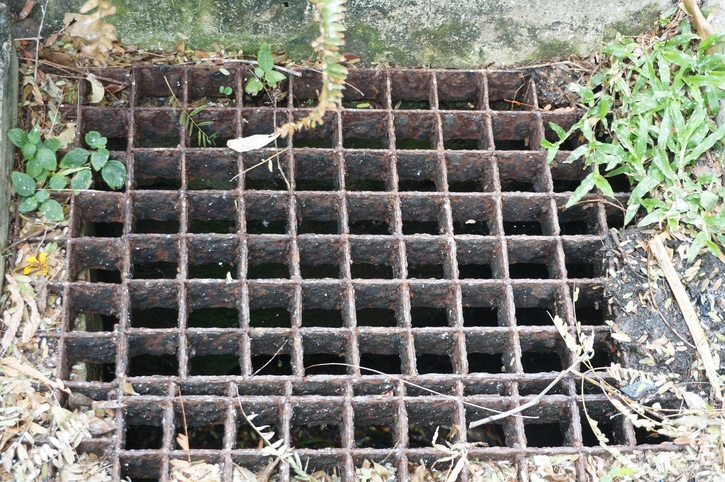Your gutters are your first line of defense against puddling water. Prolonged water exposure is the primary cause of foundation damage. The signs of residential drainage problems include a gushing gutter, moving mulch, puddling water, ground mildew, and more. We will discuss these at length; these are telltale signs that your drainage is not doing its job and requires a serious look from a professional.
1. Puddling Water
It’s normal for water to puddle around your yard after rain. It becomes abnormal, however, if the puddle remains for days on end. The water is supposed to eventually drain out to the street or filter through the soil. Water puddling indicates one of two things: the drainage system needs work, and the yard is likely not properly sloped.
2. Gushing Gutters
Is water exiting the downspout sporadically instead of flowing out smoothly? This is a sign of a backed-up gutter. You may also notice mud splatters on the wall; this indicates water coming out forcefully and in short bursts. You will need to clean the gutters. In most cases, you may just need to get on a ladder and remove physical debris by hand. It’s also possible, though, that the gutters may be damaged, improperly pitched, or undersized. The gutters may need to be reconfigured.
3. Ground Mildew
If you spot or smell mildew on the ground, that’s a tipoff that an issue is occurring at ground level.
4. Shifting Mulch
Do you notice mulch moving away from certain areas, leaving bare spots in the soil? Mulch shifts when water collects and carves a gulley within the landscape. Often, the water will carry away much of the mulch and vegetation and drag them into spots where they don’t belong. Aside from poor drainage, water can also puddle due to compact soil that doesn’t drain properly. This is especially common in the North Texas region where the heavy clay-based soil is prone to compaction.
5. Bowing Floors
Water can seep into the concrete foundation especially if there are existing cracks and splits in the slab. This causes further warping and expansion. Of course, you can’t see the foundation directly, but you will notice something is awry when the floors feel a bit “off.” You may notice some parts feel like it’s bulging, slanted, or sloped.
Correct Drainage Problems ASAP
Drainage issues will only exacerbate over time. Don’t ignore the drainage problem signs, believing they are just the normal recourse after a rain spell. The effect of ponding water can be devastating to the concrete foundation. Contact Align Foundation Repair if water time and again lingers around your property. Your drainage system likely requires some refitting. We provide a free estimate with every home visit.









